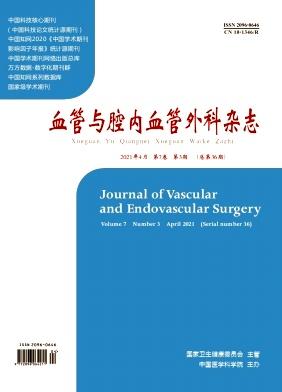Natural history of the iliac arteries after endovascular abdominal aortic aneurysm repair and suitability of ectatic iliac arteries as a distal sealing zone.
引用次数: 28
Abstract
PURPOSE To investigate the natural history of dilated common iliac arteries (CIA) exposed to pulsatile blood flow after endovascular abdominal aortic aneurysm repair (EVAR) and the suitability of ectatic iliac arteries as sealing zones using flared iliac limbs. METHODS Follow-up computed tomograms of 102 CIAs in 60 EVAR patients were investigated. Diameter changes in CIAs < or =16 mm (group 1) were compared with changes in vessels where a dilated segment >16 mm in diameter continued to be exposed to pulsatile blood flow (group 2). Within group 2, cases in which the stent terminated proximal to the dilated artery segment (2a) were compared with those that had been treated with a flared limb (2b). RESULTS The mean CIA diameter increased by 1.0+/-1.0 mm in group 1 (p<0.001 versus immediately after EVAR) and by 1.5+/-1.7 mm in group 2 (p<0.001 versus immediately after EVAR) within an average follow-up of 43.6+/-18.0 months. Diameter increase was more pronounced in dilated CIAs (p=0.048), and it was not significantly different between groups 2a and 2b (p=0.188). No late distal type I endoleak or stent-graft migration associated with CIA ectasia was observed. CONCLUSION Dilatation of the CIA is significant after EVAR, and it is more pronounced in ectatic iliac arteries. Although ectatic iliac arteries appear to be suitable sealing zones in the short term, continued follow-up is mandatory.腹主动脉瘤腔内修复后髂动脉的自然历史及扩张髂动脉作为远端封闭区的适宜性。
目的探讨腹主动脉瘤腔内修复术(EVAR)后扩张髂总动脉(CIA)暴露于搏动血流的自然历史,探讨扩张髂总动脉作为张开髂肢封闭区的适宜性。方法对60例EVAR患者102个cia的ct随访进行分析。将CIAs <或= 16mm的直径变化(1组)与直径> 16mm的扩张段继续暴露于搏动血流中的血管变化(2组)进行比较。在2组中,将支架在扩张动脉段近端终止的病例(2a)与使用展支肢治疗的病例(2b)进行比较。结果在平均随访43.6+/-18.0个月期间,组1的平均CIA直径增加了1.0+/-1.0 mm(与EVAR后立即相比p<0.001),组2的平均CIA直径增加了1.5+/-1.7 mm(与EVAR后立即相比p<0.001)。扩张的cia直径增大更为明显(p=0.048), 2a组与2b组间差异无统计学意义(p=0.188)。未观察到与CIA扩张相关的晚期远端I型内漏或支架移植物迁移。结论EVAR术后中央动脉明显扩张,以扩张髂动脉更为明显。虽然扩张的髂动脉在短期内似乎是合适的封闭区,但继续随访是强制性的。
本文章由计算机程序翻译,如有差异,请以英文原文为准。
求助全文
约1分钟内获得全文
求助全文

 求助内容:
求助内容: 应助结果提醒方式:
应助结果提醒方式:


